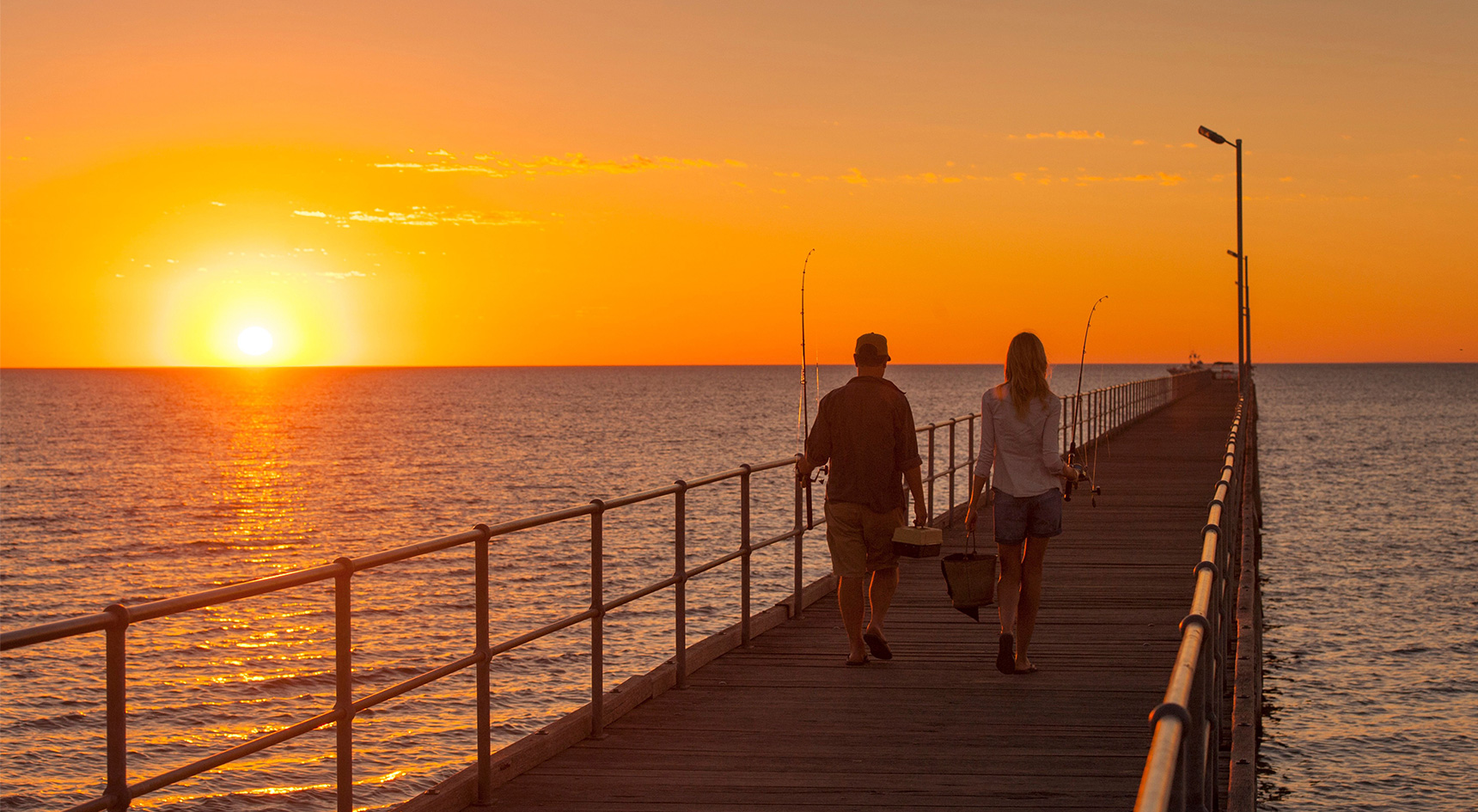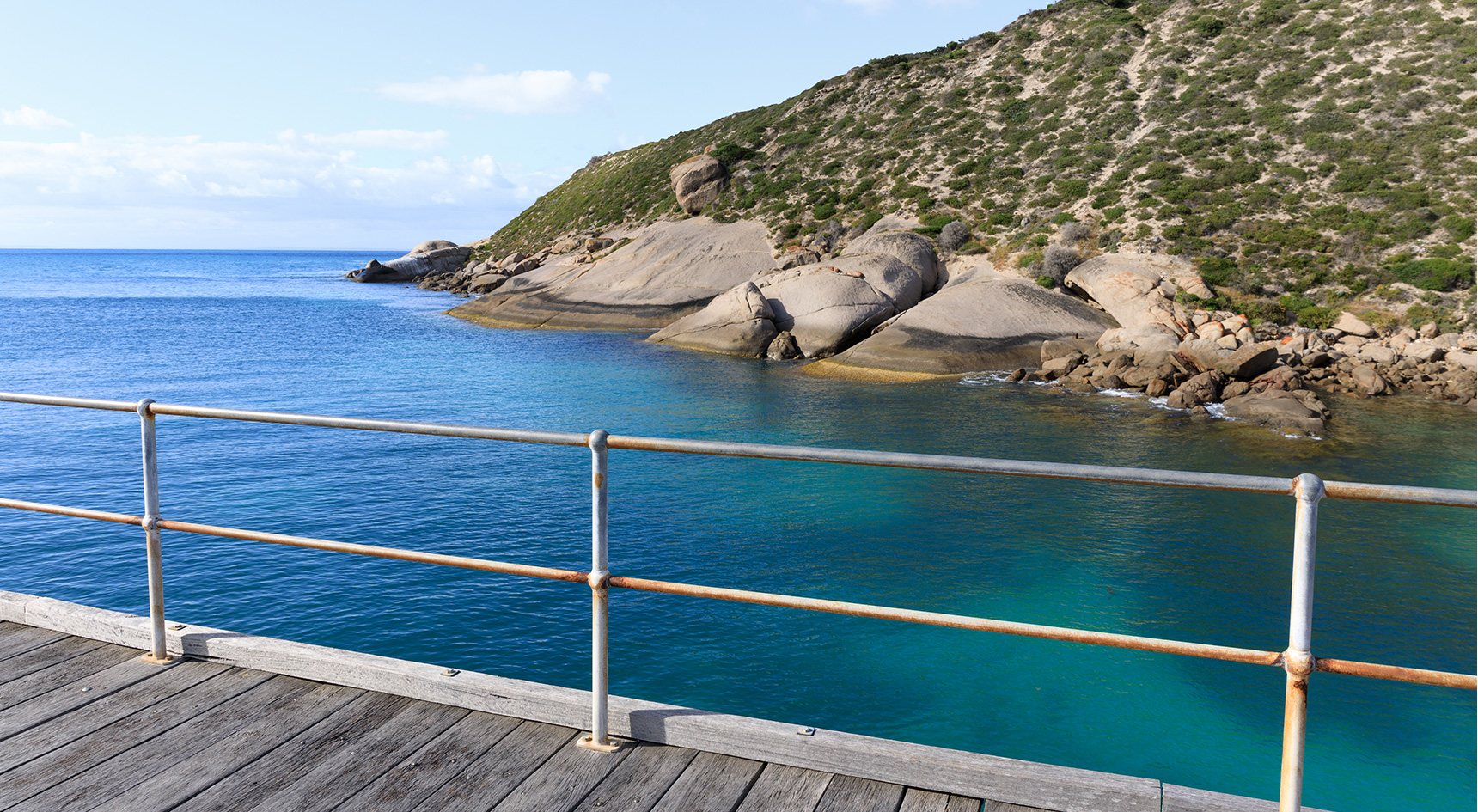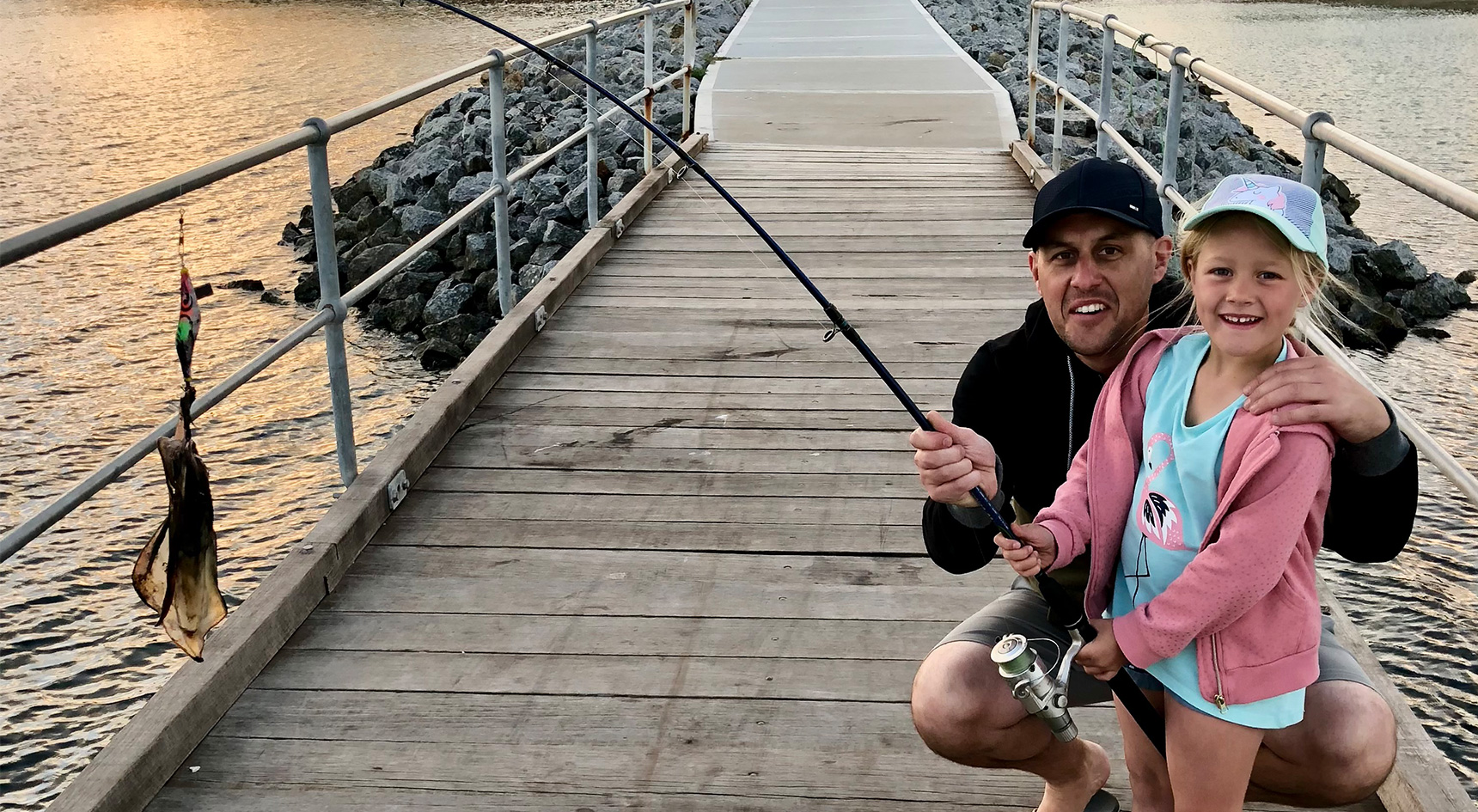By Andrew Rasch
Published: Tuesday, January 23, 2024
Sepioteuthis australis, better known as southern calamari, are perfect for a delicious meal. Add to a laksa, dish up a plate of crispy salt and pepper squid, or grill on the BBQ.
Squid are abundant in our state and there are plenty of places to catch them. If you don’t own a fishing boat, the jetty is the best place to start. Here are a few spots we recommend.
1. Brighton Jetty
Brighton is arguably Adelaide’s best metropolitan fishing jetty. This popular spot has plenty of local enthusiasts, so you can ask an experienced person for advice if you’re new to catching squid.

2. Port Noarlunga
With artificial reefs, a sheltered coastline, and fish aplenty for squid to feed on, Port Noarlunga is well worth a try. Head down south in the warmer months when squid are more active. Keep in mind the fishing restrictions on the Port Noarlunga Jetty. Fishing is allowed, except within 25m of the reef or 50m of the end of the jetty.
3. Marion Bay Jetty, Yorke Peninsula
The Yorke Peninsula is full of great jetties, but Marion Bay is a legendary spot with big squid available to catch. In late winter and spring, squid come into the bay to spawn, but you’ll need to wait until high tide.

4. The Bluff, Encounter Bay
The Bluff Jetty is only about 20m long and although it’s often crowded, it can be highly productive if you’re looking to catch large squid. Try fishing here in winter but get there early to claim a good spot.
5. Kingscote Jetty, Kangaroo Island
This jetty’s remote location might help you find a spot with plenty of squid. Between May and September is a good time to try your luck. You might even see some sea lions and dolphins while you’re there.
The rules
In SA, there’s no minimum legal length for squid, but there’s a personal daily bag and boat limit. It’s good practice to only keep what you plan to eat or use as bait; otherwise, return your catch to the water. Check the PIRSA website for more info.
When’s the best time to try?
Squid can be caught year-round, but they’re abundant at certain times and in particular conditions. They prefer clear water, so when it’s windy and the water is murky, they’ll be harder to find.
During the main winter spawning season, and when there’s a high tide, larger squid are often found in shallow water at a depth of two to three metres. They’re attracted to light, so they’re most active at night, but you can still catch them during the day. Try around dusk or set the alarm extra early, fill your thermos and head out around dawn. If you see lots of fresh ink patches on the jetty, it’s a good sign squid are around.

How to catch squid
Catching squid is relatively simple, especially for kids, because – unlike fishing – you don’t have to thread messy bait on a hook or set up special rigs. An artificial prawn-imitation jig with sharp prongs at the end is a proven way to catch squid. These jigs come in a variety of bright colours and are available from fishing and tackle shops.
There are different techniques to catching squid but generally, you cast out the jig, let it sink and slowly reel it in, then repeat. Another method is to attach a float to your line, so the jig sits about a metre above the seaweed. Cast your line and wait. If a squid takes the jig you’ll notice the float being pulled below the water. It’s then time to reel it in steadily and put a long-handled net under the squid when it’s within reach. Leave it in the net for a while until it squirts its ink. Squid ink is nice with linguine, but not so much on your face and clothes.
